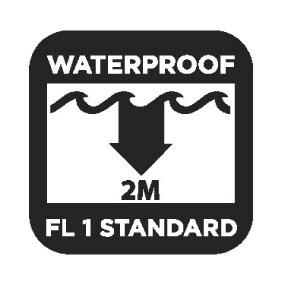There isn’t a ton of flashlight maintenance you have to know to care for your LED, but there are some simple things you can do that can help your flashlight last longer. Take a look!
Store batteries properly
It’s super important that you don’t leave batteries in flashlights that you don’t use frequently. I keep a small flashlight in the glove box of my car for emergencies, but I rarely use it. In fact, when I’m having car problems, it’s normally at a time when I can wait until daylight to look at what’s going on, so it’s very rare that I actually use that flashlight.
One day I actually needed to use my flashlight to look under the hood of my car at night, and as you might guess, my flashlight wouldn’t turn on. I was really surprised that my LED wouldn’t turn on because I had only used the flashlight once or twice before, so it didn’t make any sense for it to not be working.
When we opened up my flashlight to see what was going on, we found out that the batteries had leaked and corroded inside the flashlight (joy of joys).
To avoid a super frustrating experience like this, don’t leave your batteries inside your flashlight if you use the flashlight only for emergencies or infrequently at all. At the very least, it’s a good idea to check your flashlights every 6 months or so to make sure the batteries haven’t leaked and that no corrosion has taken place.
If you’re storing your batteries outside of your flashlight, make sure to store them in a cool, dry place. But, don’t store them in a fridge or freezer!
Avoid water
This should be obvious, but you don’t want to intentionally bring your LED flashlight into the water unless you have a special dive light or other light that is designed for water use. Many flashlights are waterproof up to certain depths. This symbol on a flashlight package indicates how waterproof the LED is:
This symbol will show you how deep a flashlight can be submerged and still function. The test requirements for a waterproof rating are that the light must be submerged one meter minimum for half an hour, and the light must work normally directly after the test and also 30 minutes after the test has been completed.
Don’t abuse your LED
Don’t use your flashlight like it’s another tool. You have hammers for pounding, so don’t use your flashlight for that.
Dissembling
Dissembling your LED flashlight will void any warranty associated with it. If you know that and you want to take your flashlight apart anyway to do maintenance, go for it, but just know that your flashlight will no longer have a valid warranty. Also, I’d only take your flashlight apart if you know what you’re doing. Many a person has taken apart a bike, instrument, or tool only to find out that putting it back together isn’t as easy as they thought.
So those are some of the things you shouldn’t do with your flashlight. I looked online for general care and maintenance that you should be doing with your flashlight, but it seems like only the super hardcore flash-aholics do much at all to maintain their LEDS. Generally speaking, it’s a good idea to keep the contacts clean, and some people put lubricant on certain parts inside the light.
As you can see, flashlight maintenance is pretty easy. What other things do you do to care for and maintain your LED flashlights?
If you’re in the market for a new LED, Blade HQ is a great place to look!

